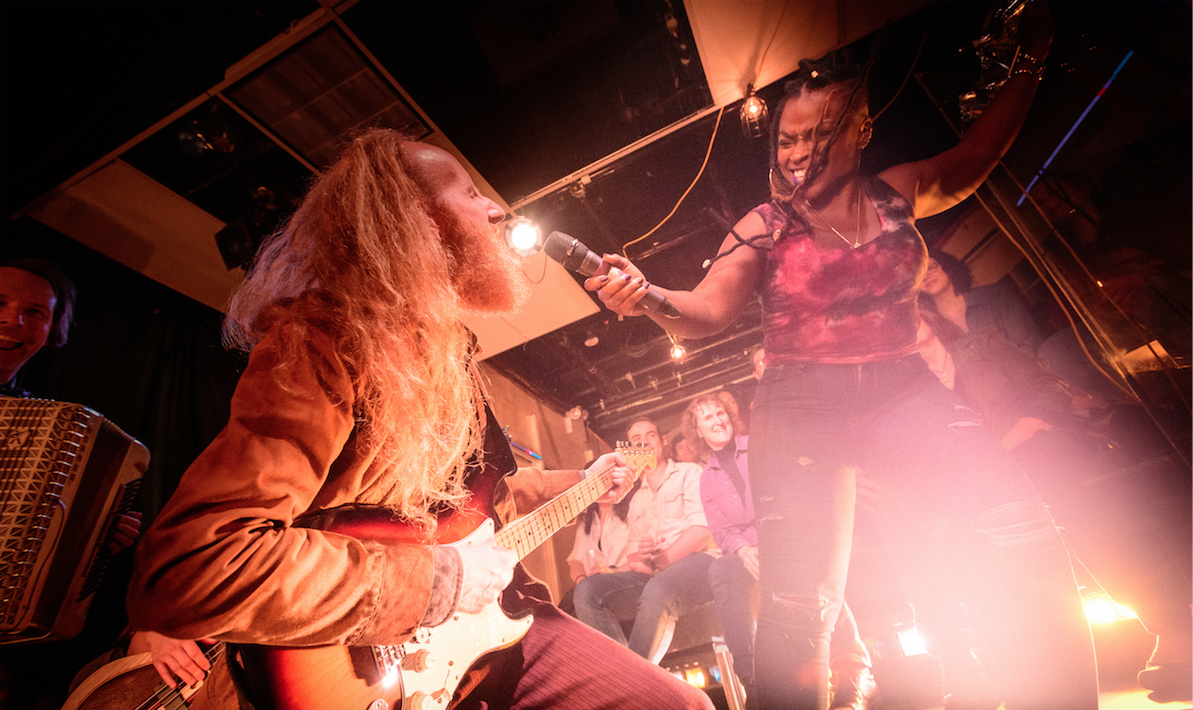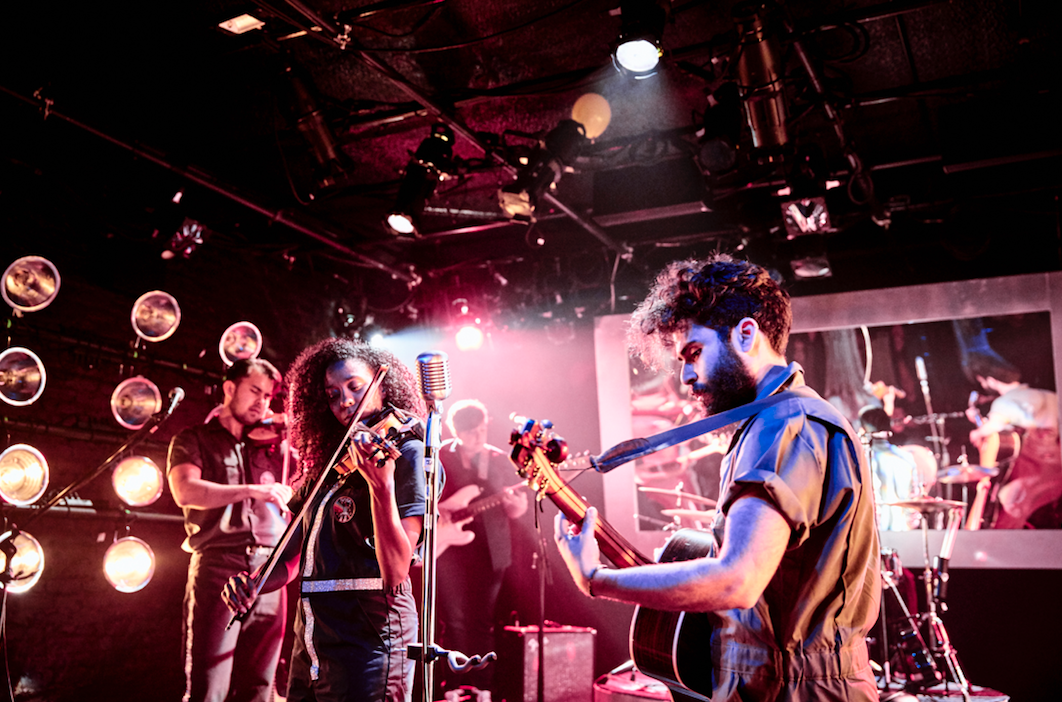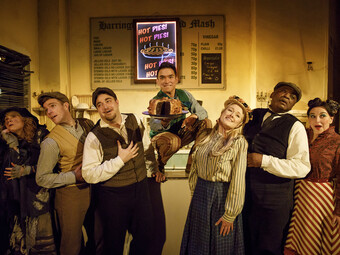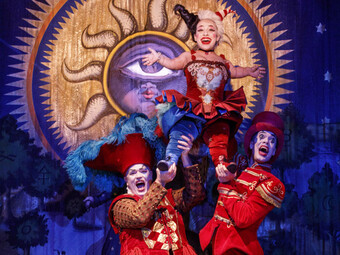Primary sources were difficult to come by and ambassadors of the genre were tough to contact. Finally, after many of my emails bounced back, I got in touch with Merav Hoffman, a prominent member of the New York filk community and the vice president of Interfilk, an organization that seeks to connect filkers to new communities. “Filk isn’t one community, it’s hundreds,” Hoffman explains, citing this as the reason for a scarcity of entry points and centralized information. She explains that filk-specific conventions have existed globally for the past thirty years, and it’s become her mission to bring these disparate communities together. She had just returned from the largest convention—the Ohio Valley Filk Festival—but mentioned others in Seattle, California, Georgia, Ontario, Germany, and the United Kingdom. Day to day, filkers organize “house sings,” where they gather with their local communities to share songs they’ve written and to sing along to the filk musical cannon that has been established over time.
This cannon, hundreds of songs deep, includes pieces about Doctor Who, Harry Potter, time travel, space flight, and seemingly every other topic that might fall under the impossibly vast umbrellas of sci-fi and fantasy. At its simplest definition, filk music is the channeling of fandom through song. Sometimes these songs take the form of a Weird Al–esque parody, but just as often the tunes and concepts are completely original, lending themselves perfectly to a theatrical application. Theatre and filk have established a reciprocal symbiosis over the years.
At its simplest definition, filk music is the channeling of fandom through song.
Hoffman, who as luck would have it is a huge theatre fan herself, explains, “There are a lot of pieces of theatre right now that are being pulled into filk as inspiration. We’ve had musical theatre filk sings, and they’ve been jammed. People were in there singing Man of La Mancha, Camelot, Joseph… Pretty much anything you can think of. Hadestown frequently makes an appearance in filk circles. Sondheim is a big influence, too.” Filkers have long been using these songs as inspiration to write their own musicals. As an example, Hoffman cites H.M.S. Trek-a-Star, a Star Trek parody of Gilbert and Sullivan’s H.M.S. Pinafore which first premiered in 1967 at the sci-fi convention Westercon. Another example, circa 1987, is The Rocky Horror Muppet Show, which is exactly what it sounds like. Both of these filk musicals are frequently staged at conventions.
Today, Andrew R. Butler, the writer and star of Rags Parkland Sings the Songs of the Future, and Jacob Brandt, the writer and star of 1969: The Second Man, are bringing original filk musicals into the mainstream. Fascinatingly, neither playwright knew filk existed while they were writing these musicals. Butler discovered filk after making the same quick Google search I had, and was none too surprised to learn of the genre’s deep roots, pointing to the moments where sci-fi and folk have overlapped in the mainstream now and again. “I never imagined that nobody had done this before. Even just listening to old folk music, there are lots of great blippy instances of imagining a future inside of the shape of [folk],” Butler explained. “In [Rags Parkland], I talk about Bob Dylan’s Talkin’ World War III Blues, which is absolutely a work of science fiction. But I didn’t know about filk. Once I was already deep into writing this project, I started poking around, just trying to do some research and get my bearings and I discovered it. And I was like, ‘Oh, duh. Of course it exists!’”
For Butler, the seed that eventually grew into the character of Rags, a folk singer recounting the ill fate of a group of his bionic friends (known as “Constructeds” in the play) in the twenty-third century, was planted by “What’ll We Do With Ragland Park?,” a short story about political power–grabbing in a post-apocalyptic society, written by legendary sci-fi writer Philip K. Dick. “The [image] of this roots musician working in the future seemed so immediately rich in a way that the short story wasn’t interested in,” explains Butler. So, in true filk fashion, Butler imagined a new world for this character, tweaking his name but leaving the nod to Dick intact; giving him a backstory, a cause to fight for, and a reason to sing folk music.
The world of filk has always been varied and deep, but up to now it’s remained a largely underground community.
Rags Parkland asks the audience to imagine a future in which folk music is still a well-trod genre, eliminating some of the pitfalls that may come when trying to establish a brand new sci-fi universe from scratch. “The believability gap in theatre is really tricky. It would be so easy to try and build out a science fictiony thing and have it feel totally silly,” Butler explains. “Instead, we have a thing we can grab onto that has a shape we can understand. It comes with a whole kit of aesthetics that circumvent the need to portray futuristic technology. We don’t have to try to invent an aesthetic and get bogged down in ‘But would people dress like that? But would music sound like that? But would rooms be designed this way?’” Most importantly, all of this works on a character level, which is critical to ensuring it doesn’t feel like a cop-out. Folk music as protest song perfectly fits the bill as a vessel in which these characters operate.










Comments
The article is just the start of the conversation—we want to know what you think about this subject, too! HowlRound is a space for knowledge-sharing, and we welcome spirited, thoughtful, and on-topic dialogue. Find our full comments policy here